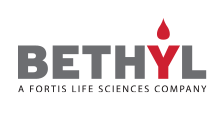Rabbit anti-NONO IHC Antibody

Catalog #
NONO
Human
,Mouse
IHC
Rabbit
Polyclonal
Whole IgG
Between 350 and 400
IgG
Unconjugated
Antigen Affinity Purified
Product Details
Mouse,
Human
Guinea_pig,
Horse,
Dog,
Pig,
Rabbit,
Bovine,
Monkey,
Rat
Human
2 - 8 °C
1 year from date of receipt
Non-POU-domain-containing octamer binding protein (NONO) is a member of the DBHS (drosophila behavior, human splicing) domain-containing family and is an RNA- and DNA- binding protein. NONO and other DBHS domain-containing proteins are multifunctional and are reported to be involved in transcriptional regulation, mRNA processing, and DNA non-homologous end joining (NHEJ). NONO functions as a coregulator of the androgen receptor (AR) and also regulates cAMP transcriptional activity by interacting with gene promoter elements. NONO is also involved in pre-mRNA splicing through an interaction with U5 snRNA and can stimulate DNA nonhomologous end joining (NHEJ) through the interaction with ku70/G22p and ku80/XRCC5 dimers.
Non-POU domain-containing octamer-binding protein
Alternate Names
54 kDa nuclear RNA- and DNA-binding protein; 55 kDa nuclear protein; DNA-binding p52/p100 complex, 52 kDa subunit; MRXS34; NMT55; NonO protein; non-POU domain-containing octamer (ATGCAAAT) binding protein; non-POU domain-containing octamer-binding protein; NRB54; P54; p54(nrb); P54NRB; PPP1R114; protein phosphatase 1, regulatory subunit 114
Applications

